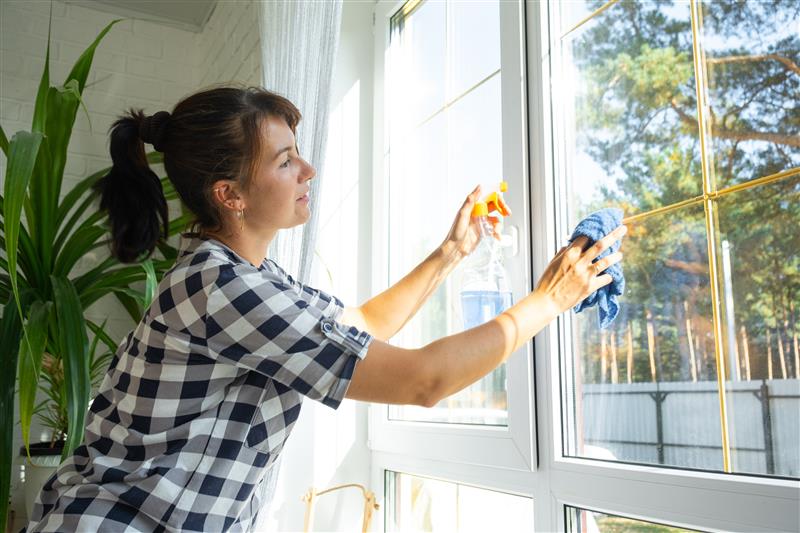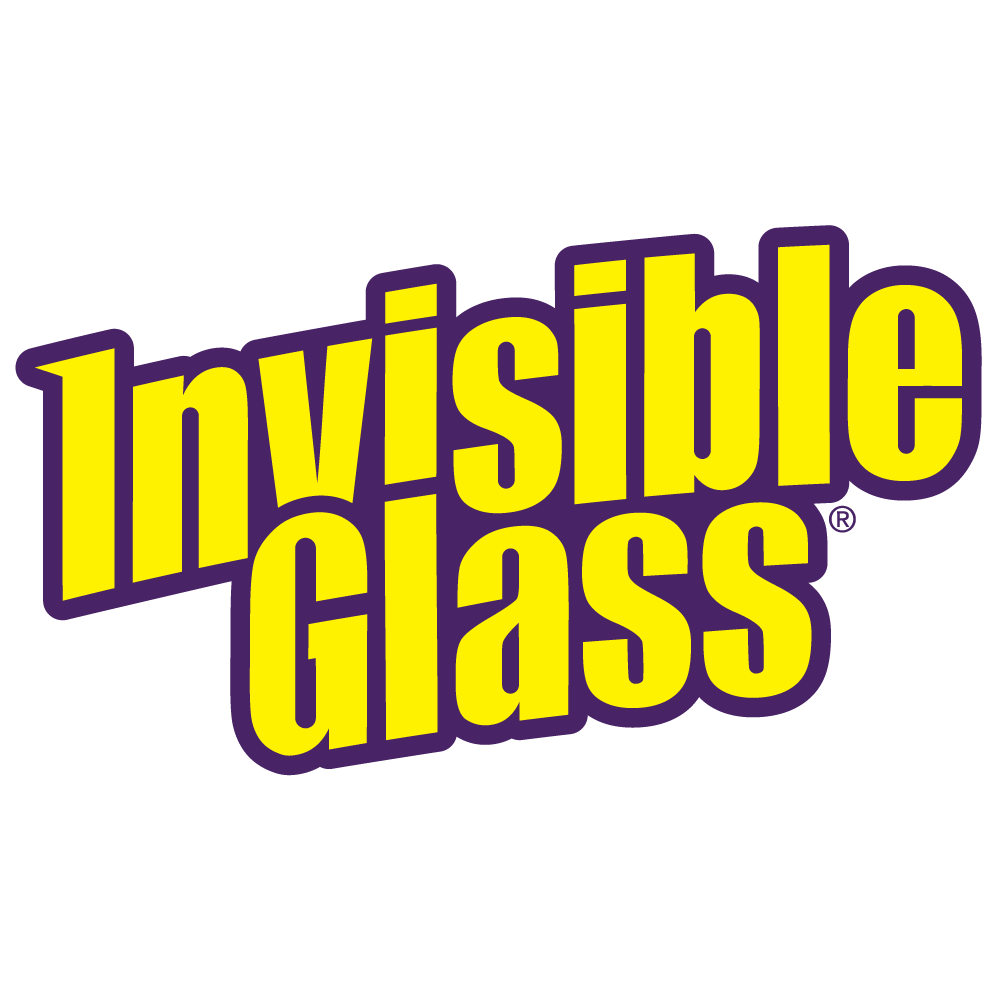
Cleaning your home’s windows should be simple: spray, wipe, done. But it rarely works out that way. Whether you are tackling indoor glass covered in fingerprints or exterior panes stained with hard water and grime, the same problem tends to show up in the end—streaks.
Even when the glass looks clean, sunlight often reveals what you missed.
Window glass behaves differently from other household surfaces. It reflects light at sharp angles, holds onto residue, and makes every smudge stand out. Without the right tools and techniques, even careful cleaning can leave behind a hazy finish.
This guide covers five practical window cleaning strategies that professionals and experienced homeowners rely on for effective cleaning. No gimmicks. No strange ingredients. Just simple methods that deliver clear results, with a few product suggestions included along the way.
1. Stop Using Paper Towels. Use Two Microfiber Cloths Instead.
One of the most common mistakes in glass cleaning is using paper towels. They leave behind lint and tend to smear cleaner across the surface rather than lifting dirt or oil. Microfiber cloths are a better option, especially those with low-pile or waffle-weave textures, which are specifically designed for glass.
For best results, use two cloths: one to clean and one to dry.
How to clean glass with two microfiber cloths:
● Spray the glass with a professional-strength, ammonia-free cleaner.
● Wipe using the first microfiber cloth in one direction (top to bottom or side to side)
● Follow immediately with a second clean, dry microfiber cloth, wiping in the opposite direction to remove any remaining moisture and polish the surface.
This technique helps prevent streaks caused by leftover cleaner or uneven drying.
⭐Pro Tip: A streak-free product makes this method even more effective. Invisible Glass contains no ammonia, soaps, dyes, or added fragrances, so your microfiber lifts dirt without leaving behind film or residue.
2. Choose a Cloudy Day for Better Results
The best time to clean your windows isn’t during a sunny afternoon. Bright sunlight heats the glass, which causes your cleaning spray to evaporate too quickly. When the cleaner dries before you can wipe it, it leaves behind streaks, smudges, and baked-on residue.
Instead, clean your windows on a cool, overcast day. You’ll have more working time, and your cleaner will stay effective longer.
⭐Pro Tip: If the weather is sunny and you need to clean anyway, start on the shaded sides of your home. Wait for the sun to move before tackling windows in direct light. You’ll get better results and waste less effort.
3. Use an “S” Pattern for Streak-Free Coverage
Wiping windows in circles or quick back-and-forth strokes often just spreads grime. The “S-pattern” offers a more effective approach. It moves dirt across and off the glass without re-depositing it, which helps eliminate streaks and smudges.
How to use the S-pattern:
● Start in the top-right corner of the glass.
● Wipe in a wide “S” shape from side to side.
● Work downward with each pass, overlapping slightly.
● Keep even pressure as you move across the surface.
This method works well whether you’re using a microfiber cloth or a cleaning tool. The Quick Change Reach & Clean Home Tool allows you to apply the same S-pattern on tall or hard-to-reach panes. Its triangular microfiber head fits corners easily and helps you avoid touching the glass.
⭐Pro Tip: If you’re using a cloth, fold it in half lengthwise, then fold it in half again to create a quarter-fold. This gives you multiple clean surfaces to work with. When one section becomes damp or dirty, flip to a fresh side to keep streaks from forming.
4. Clean the Frames Either First or Last—Not in the Middle
Window frames and sills are often overlooked, but they can undo your hard work. Dust, cobwebs, and oxidation from aluminum or vinyl can blow back onto freshly cleaned glass. If you wipe the glass first and then clean the frames, you risk splashing dirt or cleaner onto the surface you just finished.
If the frames are visibly dirty:
Clean them first. Use a damp cloth, vacuum attachment, or soft brush to remove buildup. Let them dry before moving on to the glass.
If you’re just dusting or touching up:
Clean the glass first, then finish with a light wipe of the frames, avoiding drips or overspray.
⭐ Pro Tip: When cleaning glass and surrounding sills or frames, prevent cross-contamination. Clean frames help keep clean glass looking spotless.
5. Pre-Treat Greasy Film with Isopropyl Alcohol
Kitchen windows, bathroom glass, and panes near fireplaces often collect a greasy film. This residue builds up from cooking vapors, smoke, or scented candles. Standard glass cleaners usually aren’t enough to break through it on the first try.
Try this pre-treatment method:
● Mix equal parts isopropyl alcohol and distilled water in a spray bottle.
● Lightly mist the glass and wipe with a microfiber towel.
● Follow with a glass cleaner for a streak-free finish.
The alcohol mix cuts through oily buildup, allowing your glass cleaner to work more effectively. It evaporates quickly, leaving no residue.
⭐Safety Note: Always use isopropyl alcohol in a well-ventilated space. Never mix it with other chemicals, especially bleach. Keep the solution simple and effective.
Why Use Invisible Glass?
This guide isn’t about promoting a single brand, but Invisible Glass stands out for good reason. It’s trusted by professionals and homeowners alike for delivering reliable, streak-free results.
✔ It’s ammonia-free, making it safe for tinted windows, indoor use, and sensitive surfaces.
✔ It contains no residue, dyes, or added fragrances, which are common sources of streaking.
✔ It’s available in both aerosol and spray formats to match your preferred cleaning method.
When paired with the proper techniques, Invisible Glass Home Cleaner leaves glass surfaces clear, polished, and truly clean.
Clearer Windows, Smarter Cleaning
Window cleaning doesn’t have to be frustrating. With the right techniques and a little strategy, you can get streak-free results every time, without spending hours re-wiping the same pane.
Use microfiber cloths instead of paper towels. Work in even strokes with a clear pattern. Avoid direct sunlight, and pre-treat oily buildup where needed. These simple habits make a bigger difference than any trendy shortcut.
Pair that with a proven glass cleaner like Invisible Glass, and you get more than temporary shine. You get lasting clarity with every wipe.
Start from the top, wipe with purpose, and give your windows the attention they deserve. Your home (and your view) will look better for it.



